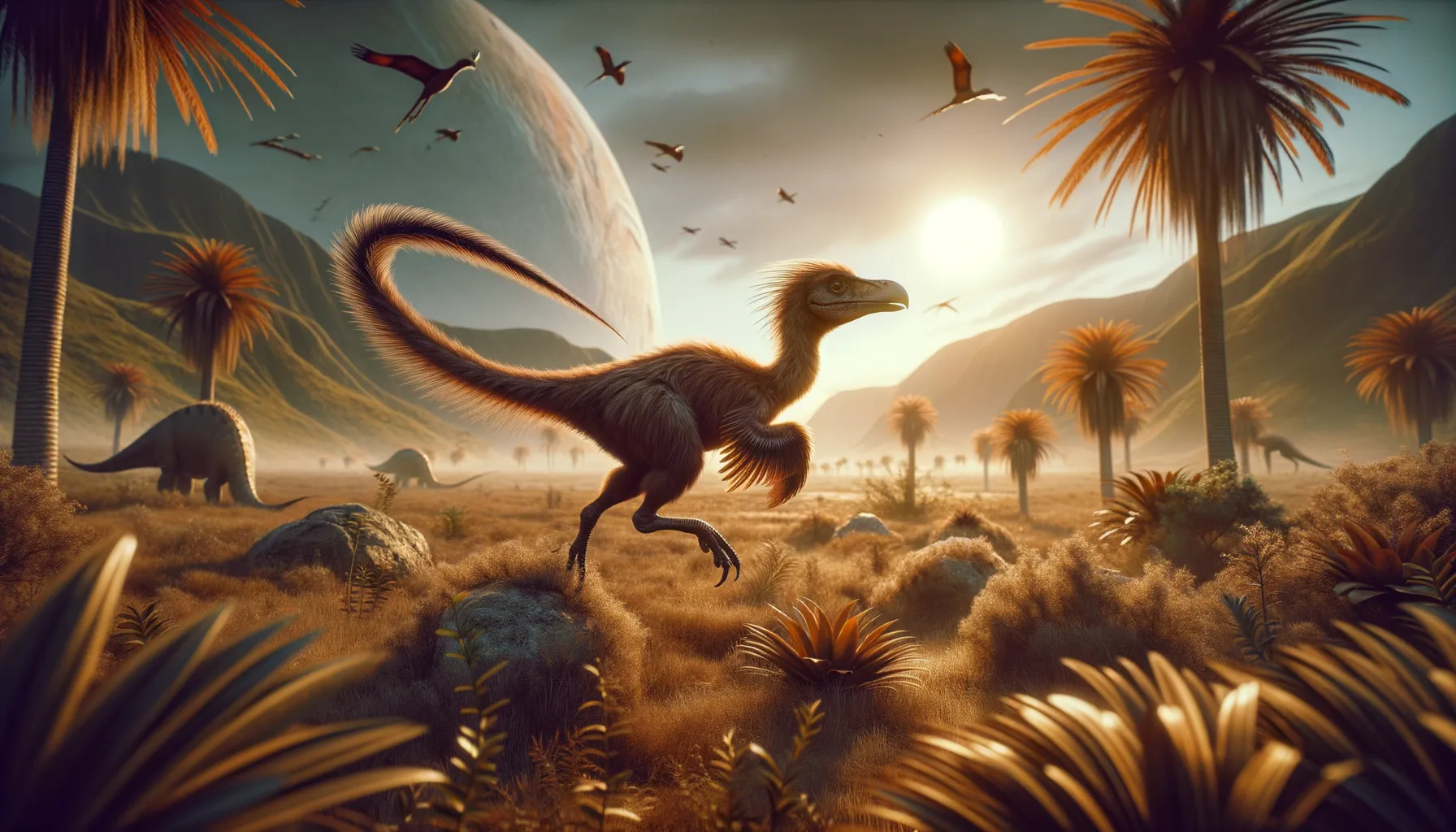
Kulindapteryx
Swift and small, a Jurassic marvel.
Period
Jurassic
Length
Around 2 meters long.
Height
Approximately 1 meter tall.
Weight
Estimated around 10 to 20 kg.
Kulindapteryx was a small, bird-like dinosaur that roamed the ancient landscapes during the Jurassic period. Its fossil remains were first unearthed in the Kulinda region of Siberia, providing valuable insights into the evolution of feathered dinosaurs. Known for its quick and nimble movements, Kulindapteryx showcases the incredible diversity and adaptability of dinosaurs throughout history.
Diet
Kulindapteryx was likely an omnivore, feeding on a diet that included plants, small insects, and possibly other small creatures. Its beak-like snout suggests it could peck at its food, similar to modern birds.
Hunting
This dinosaur might have foraged for food using its keen eyesight and agility to catch small prey or insects. Its small size would have made it difficult for larger predators to spot, making it a stealthy hunter in its own right.
Environmental challenges
Living during the Jurassic period, Kulindapteryx faced challenges such as predation from larger dinosaurs. The fluctuating climate and vegetation changes required adaptability to survive. Its small size may have helped it hide from predators, but also left it vulnerable to environmental shifts.
Speed
Relatively fast for a small dinosaur.
Lifespan
Unknown, due to limited fossil records.
First discovery
Discovered in Russia from Jurassic era sediments.
Fun Facts
- Kulindapteryx lived during the Early Cretaceous period, which was around 130 million years ago.
- This dinosaur was small and bird-like, which suggests it might have been quite agile and fast.
- Fossils of Kulindapteryx have been found in Siberia, making it an interesting find for paleontologists.
- Its name, Kulindapteryx, is derived from the Kulinda locality where its fossils were discovered and the Greek word 'pteryx', meaning 'wing' or 'feather', hinting at its bird-like characteristics.
- Kulindapteryx is thought to have been an omnivore, feeding on a varied diet of plants and small animals.
- Despite being from what is now a cold region, during its time, the climate was likely much warmer, supporting lush forests.
- Kulindapteryx's discovery helps scientists understand the evolution of bird-like dinosaurs in different parts of the world.
Growth and Development
Kulindapteryx hatched from eggs, growing rapidly in its early years to improve survival chances. Feathers likely played a role in regulating body temperature as they matured. Such adaptations were crucial for enduring the varied conditions of their habitat.
Habitat
Kulindapteryx thrived in a region that is now modern-day Siberia, hinting at diverse habitats including forests and open areas. Its adaptability suggests it could navigate both dense plant regions and sparser landscapes with ease. These environments would have offered abundant resources for an omnivore's varied diet.
Interaction with other species
Kulindapteryx might have shared its habitat with other small and medium-sized dinosaurs, leading to potential competition for food. Its presence in regions with diverse species indicates possible interactions, either as competitors or incidental neighbors. Defensive traits likely helped it avoid larger predators.
Natural lifespan
Exact lifespan is unknown due to limited fossils.
Reproduction
Like many dinosaurs, Kulindapteryx laid eggs, likely in nests constructed on the ground. Parental care might have been involved, with adults protecting eggs and young from potential threats. This reproductive strategy would have been essential in ensuring the survival of its species.
Social behaviour
Kulindapteryx might have lived in small groups, which could have provided protection against predators. Social behavior could have included cooperative foraging, helping to locate food sources more effectively. Interactions within groups would have been crucial for survival and growth.
Fossil locations
Fossils have been found in the Kulinda region of Siberia. These discoveries extend our understanding of feathered dinosaurs beyond traditional locations. The fossil sites provide important clues regarding the Jurassic ecosystem in this part of the world.
